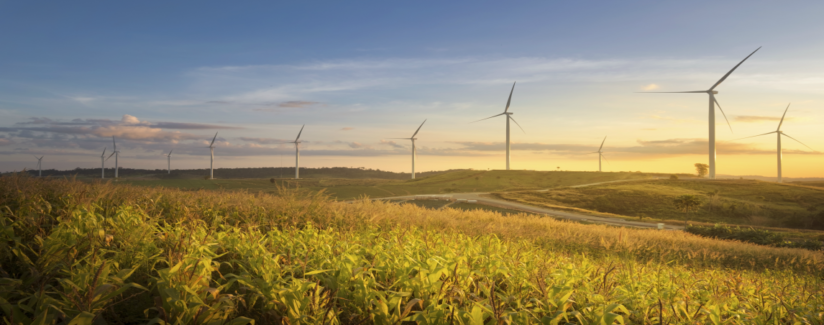
Sustainability: What are the True Impacts of Your Food Choices?
More people than ever before are paying attention to how their food is produced – and expecting it to be “sustainably” produced. Whether that’s eating less meat, or none at all, buying cage-free eggs or cutting back on dairy – many believe changing their diet in some way positively impacts the environment. But does it?
In this series, we’ll look at the science-based pros and cons of different food choices and farming methods, and their impacts on sustainability – not only on the environment, but on animal well-being, our health and our pocketbooks.
What is Sustainability?
It’s not just about being “green.”
For farmers and those involved in food production, the principle is known as the land ethic – to leave things better than we found them, according to Marty Matlock, executive director of the University of Arkansas Resiliency Center and professor of ecological engineering.
“Sustainability is a general term that describes the ability to keep doing what we’re doing. It’s not just an environmental term,” he said. “Farmers want to sustain the quality of life for their children, community health, environmental health and soil health. Conservation organizations want to sustain critical habitats and biodiversity around the world.” As farmers around the world work to grow more food to feed an exploding population, conservationists and farmers champion sustainable production so “we do not eat the remaining wild places on earth.”
Learn more about Optimizing Sustainability.
Dimensions of Sustainability
Dr. Matlock describes the key dimensions of sustainability for agriculture this way.
- Environmental: Intensification of production to feed a growing population while preserving critical habitats for other life. Water resources are shifting rapidly, increasing variability in rainfall and risks from floods and droughts.
- Social: Global challenges including access to skilled labor, adequate infrastructure in rural communities (schools, medical facilities, technical support), successional planning for next-generation farmers and access to tools that lessen the risks of farming (weather extremes, pest pressures, prices for crops, etc.)
- Climate Change: Sustainable production from the land and sea requires increasing resiliency of production systems under increased climate, economic, social and political uncertainty.
Sustainability also includes factors as diverse as health and wellness, animal welfare, treatment of workers, food waste, packaging, impact on local and indigenous communities and more. In fact, The Center for Food Integrity Optimizing Sustainability Framework, an approach to help food companies weigh the tradeoffs of sustainability decisions, lists more than 250 attributes of sustainability and corporate social responsibility.
Dr. Janice Swanson, an expert in animal behavior and welfare and a professor of animal science and large animal clinical sciences at Michigan State University, said sustainability is often viewed through three perspectives – social, economic and environmental. Interactions between these three dimensions are complex.
“We are working to balance a dynamic ecosystem that engages human beings and animals in a relationship. And even if you decide to substitute ‘plant’ for ‘animal’ you still have a complex system where two living things are engaged in balancing social, environmental and economic impacts to be sustainable,” Dr. Swanson said.
She noted there are no easy answers when it comes to producing food for consumers, whose preferences continue to diversify when it comes to how their food is produced.
Sustainability Tradeoffs
Regardless of the dimension of sustainability, there are consequences. Newton’s Third Law of Motion says it best: for every action there is an equal and opposite reaction.
In other words, while changing one factor can improve sustainability, the change can have negative impacts, too. So decisions by food companies should not be taken lightly.
“Changes in production practices made because of pressure from advocacy organizations that are not science-based can result in reduced choices at the grocery store and can increase the negative impacts of some food products,” Dr. Matlock said.
One example is cage-free eggs – eggs from hens who live in barns where they can exhibit more natural behaviors like foraging and taking short flights, said Dr. Swanson. In conventional systems, hens are housed in cages within barns.
Driven by animal welfare concerns, some advocacy groups and customers are demanding that eggs are produced only in cage-free barns. A handful of states now require that only cage-free eggs be sold, and others have legislation on the table to do the same. But are cage-free eggs sustainable?
(Read more: What’s the Difference Between Cage-Free and Regular Eggs?)
There are tradeoffs, Dr. Swanson said, including more injuries to hens from flying and hen-pecking, reduced air quality from increased dust and ammonia (which can impact employee and hen health). In addition, more hens are required to produce the same amount of cage-free eggs, so more feed, water and land are required. It costs farmers more to produce cage-free eggs, and that results in higher prices for consumers.
Just the Facts
Farmers and companies in the agriculture and food supply chain are working to improve sustainability and being diligent about measuring, monitoring and communicating improvements, Dr. Matlock said.
That’s good news.
As the world turns its focus to protecting our earth, our health, our animals – Best Food Facts is bringing you the scoop on sustainability. We’ll equip you with the science from experts so you can weigh the pros and cons and make the best choices in the grocery aisle for you and your family. Learn more about Optimizing Sustainability.



























